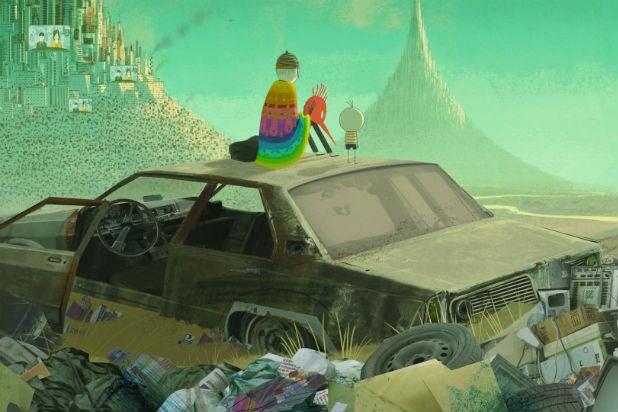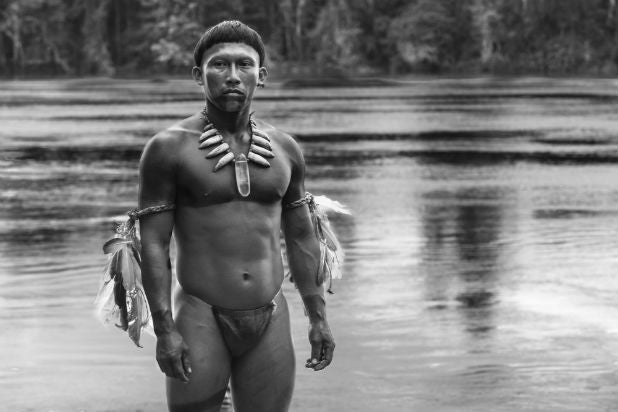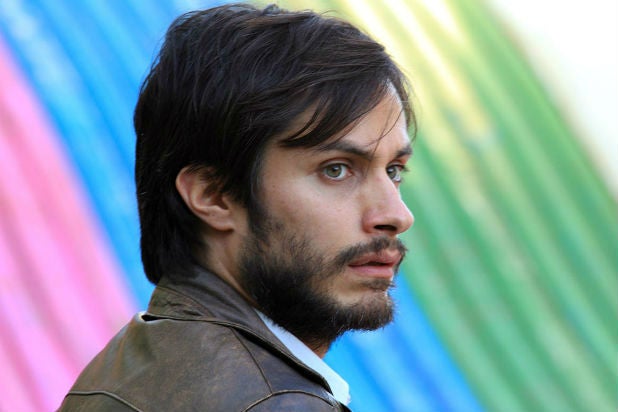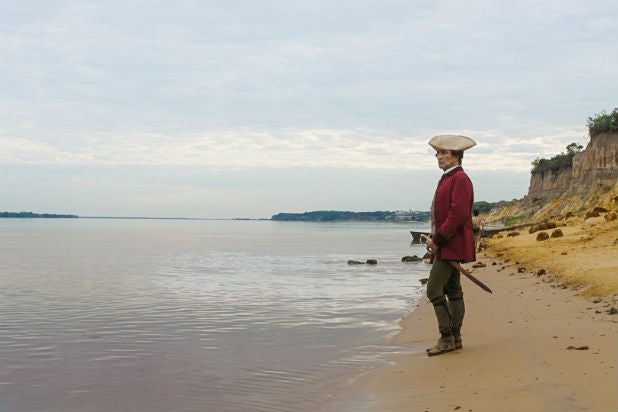TIFF 2020: In Michel Franco’s latest, inequality begets chaos begets totalitarianism. Welcome to 2020.
A region bustling with the winds of change throughout the 2010s — both progressive and retrograde — Latin America enjoyed a banner decade that witnessed the rise of films grappling with economic inequality, indigenous discrimination, and LGBTQ+ issues.
Mexico’s production continued to skyrocket (from Amat Escalante to Eugenio Derbez), Chile emerged as a powerhouse in both the arthouse and mainstream markets (with the Larraín brothers’ Fabula production company and the unofficial movement known as Chilewood), and countries like Panama (“Invasion”), the Dominican Republic (“Woodpeckers”), and Paraguay (“The Heiresses”) made strides towards a more consistent output of noteworthy offers. Although far from a definitive list, these 11 features give the world the opportunity to take a peek at the varied perspectives of Latin American creators, veterans and up-and-comers.

“Aquarius” (2016)
Vigorous and sensual, Sonia Braga commands director Kleber Mendonça Filho’s vital character study in her career-best work playing Doña Clara. The timeless Brazilian star astounds as a woman resolute on safeguarding her apartment from rapacious developers. Brilliantly, Mendonça Filho anchors her story to their country’s greater sociopolitical context, while providing a resounding reminder of Braga’s long underused excellence. At its Cannes premiere, cast and crew denounced Brazil’s political situation, a warning of what was to come in the Bolsonaro era, where the director has become a major target.

“Boy and the World” (2013)
Handcrafted whimsy with social commentary weaved in make Alê Abreu’s debut an animated triumph. Without relying on a single line of intelligible dialogue, the colorful and enchantingly designed film depicts a boy’s dazzling quest to find his father amid a realm under a tyrannical rule. Horrifying deforestation and the loss of dreams to an exploitative economic system are also addressed in this incredibly poignant and musical adventure. It’s also the first and so far the only Latin American animated feature to be nominated for an Oscar.

“Devil’s Freedom” (2017) and “Tempestad” (2016)
Documentarians Everardo González and Tatiana Huezo addressed, respectively, the human cost of the ongoing Mexican Drug War — and such peripheral evils as rampant corruption — with uniquely intimate portraits of a country in turmoil based on first-hand accounts. Searing interviews with victims and perpetrators all wearing identical face-tight masks blur the lines between both sides in González’s “Devil’s Freedom.” Huezo’s “Tempestad,” meanwhile, gives voice to two women whose lives were upended by cartel-related violence. Similarly haunting, these non-fiction gems are essential viewing to understand Mexico today.

“Embrace of the Serpent” (2015)
Wrapped in mysticism, Ciro Guerra’s cinematic knockout on the harrowing legacy of European colonialism earned Colombia its first nomination for the since-renamed Best Foreign Language Film Academy Award. Told in two different time periods from the point of view of Karamakate (Nilbio Torres/Antonio Bolivar), a wise Amazonian indigenous man, this transcendental accomplishment chronicles his fateful encounters with two separate white visitors and the ancestral beliefs that reign over the land. David Gallego’s black-and-white cinematography heightens the film’s dreamlike quality.

“A Fantastic Woman” (2017)
In addition to winning Chile’s first Oscar for what’s known today as the Best International Feature Film category, Sebastián Lelio’s genre-defying success introduced transgender actress Daniela Vega to the world. On screen she soars as Marina, a transgender woman mourning her boyfriend in a society that refuses to acknowledge their love as valid, but it’s the visibility the role brought to gender-identity issues in the South American country that turned the film to a watershed event. Further attesting to its cultural significance, Vega also became the first trans performer to present at the Oscars.

“From Afar” (2015)
Seasoned actor Alfredo Castro and newcomer Luis Silva star in this darkly tantalizing Venezuelan drama from Lorenzo Vigas. Set against the backdrop of chaotic Caracas, the two-hander studies the power dynamic between a middle-aged gay man and a young criminal hired to fulfill his desires and carry out a deadly mission. Audacious writing and starling turns from both actors wowed the jury at the Venice International Film Festival, where it was awarded the Golden Lion, becoming the country’s highest profile production ever.

“Ixcanul” (2015)
Guatemalan auteur Jayro Bustamante has single-handedly revitalized his homeland’s national cinema with three features that scrutinize its past and present particularly in relation to the indigenous population and LGBTQ+ people. His visually stunning debut unfolds within the Maya Kaqchikel community and centers on a teenage girl (María Mercede Coroy) and her mother (María Telón) navigating an unplanned pregnancy in a country that has marginalized them both. Testament to the director’s commitment to create an inclusive artistic scene, both Telón and Coroy have appeared in Bustamante’s subsequent works.

“No” (2012)
Easily the most prolific Latin American director of the decade — with six features under his belt in the 2010s alone — Pablo Larraín’s career reached a new level of international exposure with this Oscar-nominated historical dramedy. Marking his first collaboration with Mexican actor Gael García Bernal, the film revolves around an advertising expert tasked with mounting a campaign that will inspire hope among Chileans to finally vote ruthless dictator Pinochet out of office. Formally inventive and sharply humorous, “No” remains among Larraín’s best in an enviable filmography.

“Roma” (2018)
Ten Academy Award nominations (including one for Best Picture) and countless other accolades established Alfonso Cuarón’s memory masterpiece about 1970s Mexico City as the most celebrated Mexican film in history. And yet, beyond all the industry recognition, its most invaluable legacy is having confronted the general public back home with the deep-seated racism that has perpetually plagued the collective consciousness. First-time actress Yalitza Aparicio, playing an indigenous housekeeper, became a beacon of diverse representation, while Netflix’s massive marketing strategy proved to be a near limitless force.

“Zama” (2017)
Ending a nine-year hiatus, Argentine master Lucrecia Martel returned with her most ambitious narrative to date, an 18th century epic adapted from Antonio di Benedetto’s novel published in the 1950s. With Mexican actor Daniel Giménez Cacho as its eponymous protagonist, a frustrated Spanish official, Martel’s sardonic take on the greedy stubbornness of colonial powers called to mind why she’s considered a singularly iconoclastic voice in modern cinema. Sultry, sun-drenched frames and a cleverly disorienting soundscape amount to an experience that’s as cerebral as it is sensory.
“No” and “A Fantastic Woman” rank among the region’s most influential films of the decade
A region bustling with the winds of change throughout the 2010s — both progressive and retrograde — Latin America enjoyed a banner decade that witnessed the rise of films grappling with economic inequality, indigenous discrimination, and LGBTQ+ issues.
Mexico’s production continued to skyrocket (from Amat Escalante to Eugenio Derbez), Chile emerged as a powerhouse in both the arthouse and mainstream markets (with the Larraín brothers’ Fabula production company and the unofficial movement known as Chilewood), and countries like Panama (“Invasion”), the Dominican Republic (“Woodpeckers”), and Paraguay (“The Heiresses”) made strides towards a more consistent output of noteworthy offers. Although far from a definitive list, these 11 features give the world the opportunity to take a peek at the varied perspectives of Latin American creators, veterans and up-and-comers.
Source: Read Full Article

